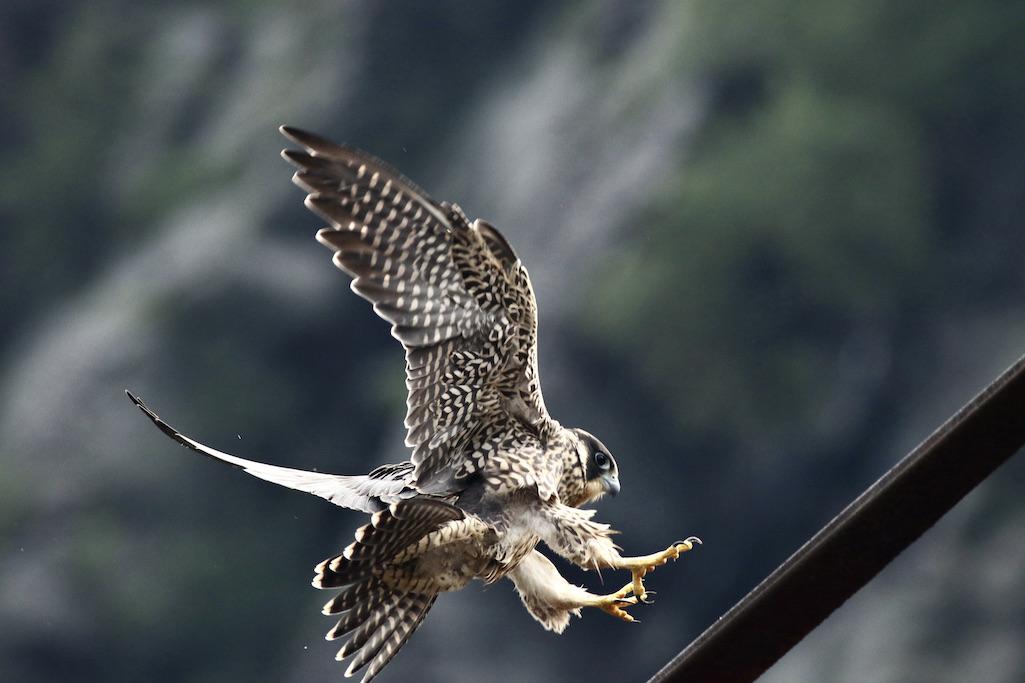
A young falcon practices its landing technique on a railroad bridge structure at Harpers Ferry National Historical Park/NPS
Not since the 1950s has a peregrine falcon chick hatched in a nest at Harpers Ferry National Historical Park in West Virginia. Well, that's changed with recent events.
According to park staff, a peregrine falcon chick has hatched and is learning to fly within the park. The fledgling has been spotted flying around the cliffs of Maryland Heights alongside watchful parents. It was one of three hatchlings, but the only chick to make it through the vulnerable newborn phase and successfully fledge (develop feathers that enable it to fly).
“The National Park Service is thrilled to see a fledging at Harpers Ferry and are grateful to the many partners and volunteers who have helped us study, monitor, and protect peregrine falcons,” Harpers Ferry Chief of Resources Management Mia Parsons said. “We hope that this is the first of many successful breeding seasons for these peregrines.”
Widely known as the fastest birds in the world, peregrine falcons have been documented reaching speeds of up to 240 mph in a hunting dive, or “stoop.” Watching one of the Harpers Ferry falcons stoop on a pigeon, blue jay, or other bird over the Potomac River is a truly spectacular sight.
Peregrines were known to nest on Maryland Heights until the early 1950s, when the species rapidly declined throughout North America and Europe primarily due to reproductive failure caused by the extensive use of pesticides such as DDT. By the mid-1960s, the peregrine falcon population in the Western U.S. had declined by an estimated 80-90 percent, and the entire Eastern population went locally extinct.
In the early 2000s, the National Park Service worked with partner agencies to translocate peregrine falcons living on human-made structures to Harpers Ferry, but none of the falcons returned to nest in the park. Sightings of individual falcons in the park increased over the next several years, but none of those birds took up permanent residence on Maryland Heights until 2015, when an adult female was observed regularly.
Since 2015, several peregrine falcons have nested at Maryland Heights, but no pair has successfully hatched chicks until this year. Park staff will continue to monitor and protect peregrine falcons in the park. Partial closures of the cliff to hiking and rock climbing are in place to ensure that the nest site is protected from human disturbance.
The peregrine falcon is protected under the Migratory Bird Treaty Act, and although the species has rebounded in many areas throughout its former range, it is still considered rare in Maryland and West Virginia. The Maryland Heights cliff is one of only two natural nest sites known to have been used by peregrines in Maryland since reintroduction efforts began there in 1975.
The peregrine falcon management program at Harpers Ferry is a collaborative effort between the NPS, the U.S. Fish and Wildlife Service, Maryland Department of Natural Resources and many dedicated volunteers.



Add comment